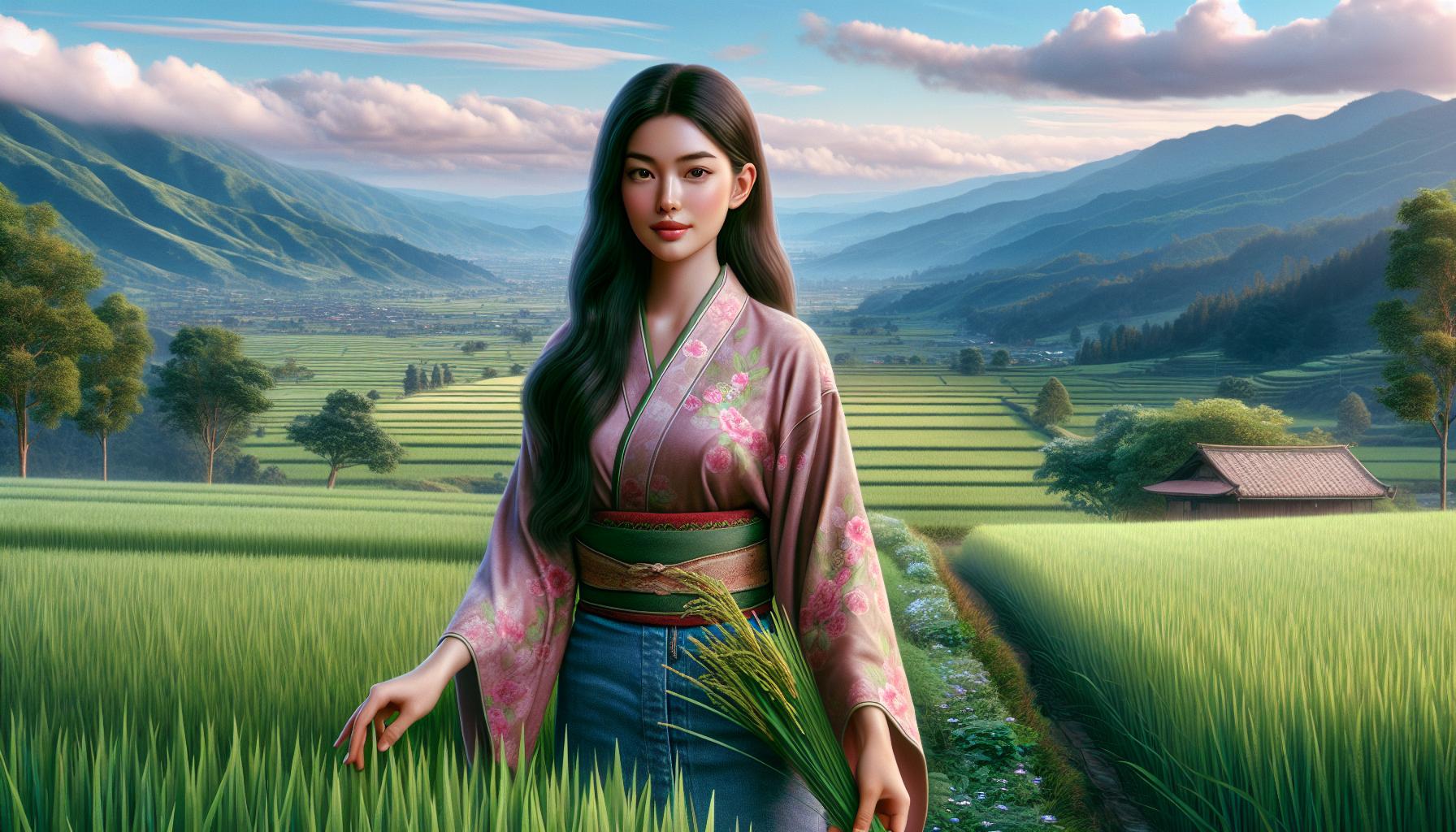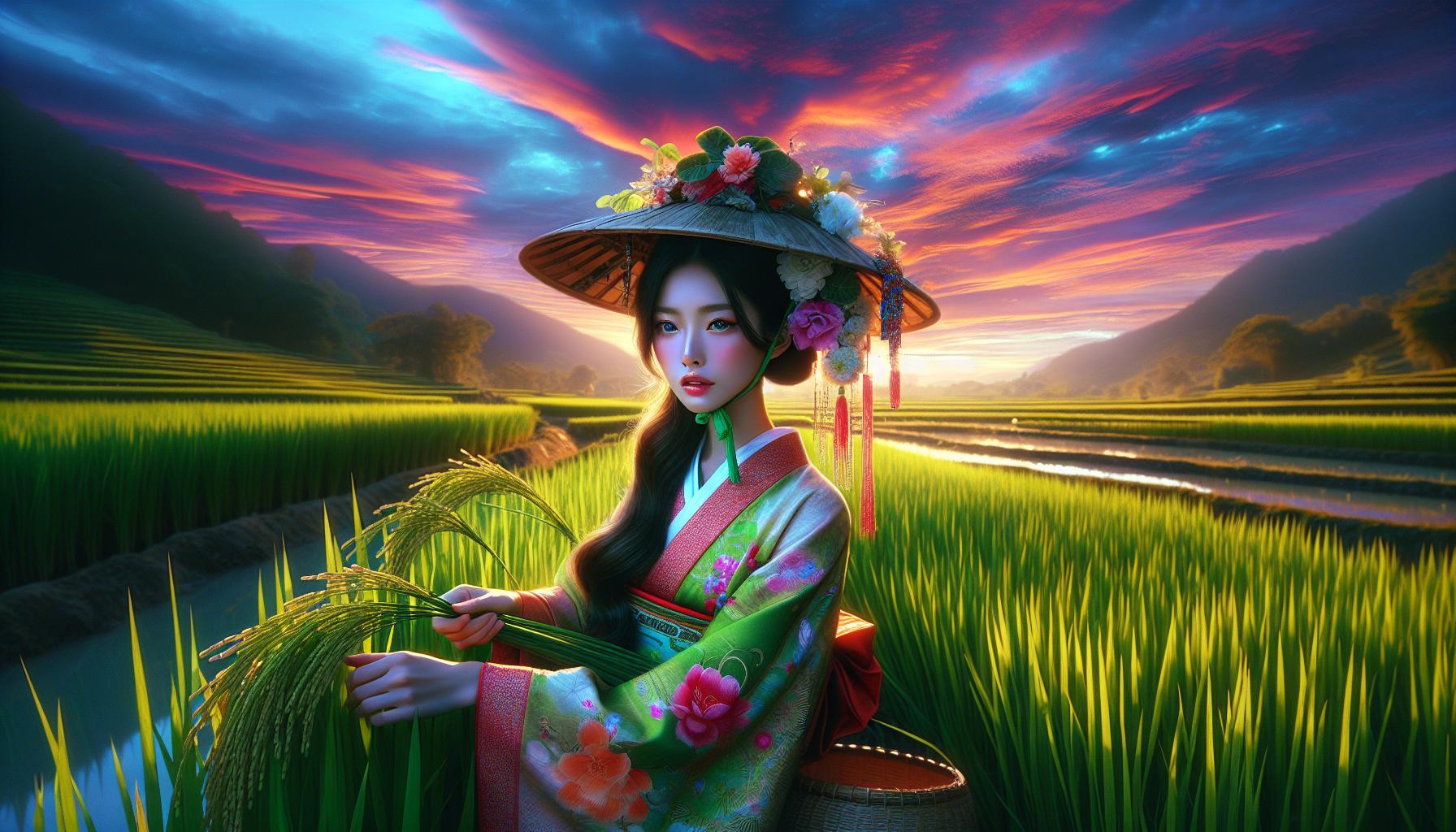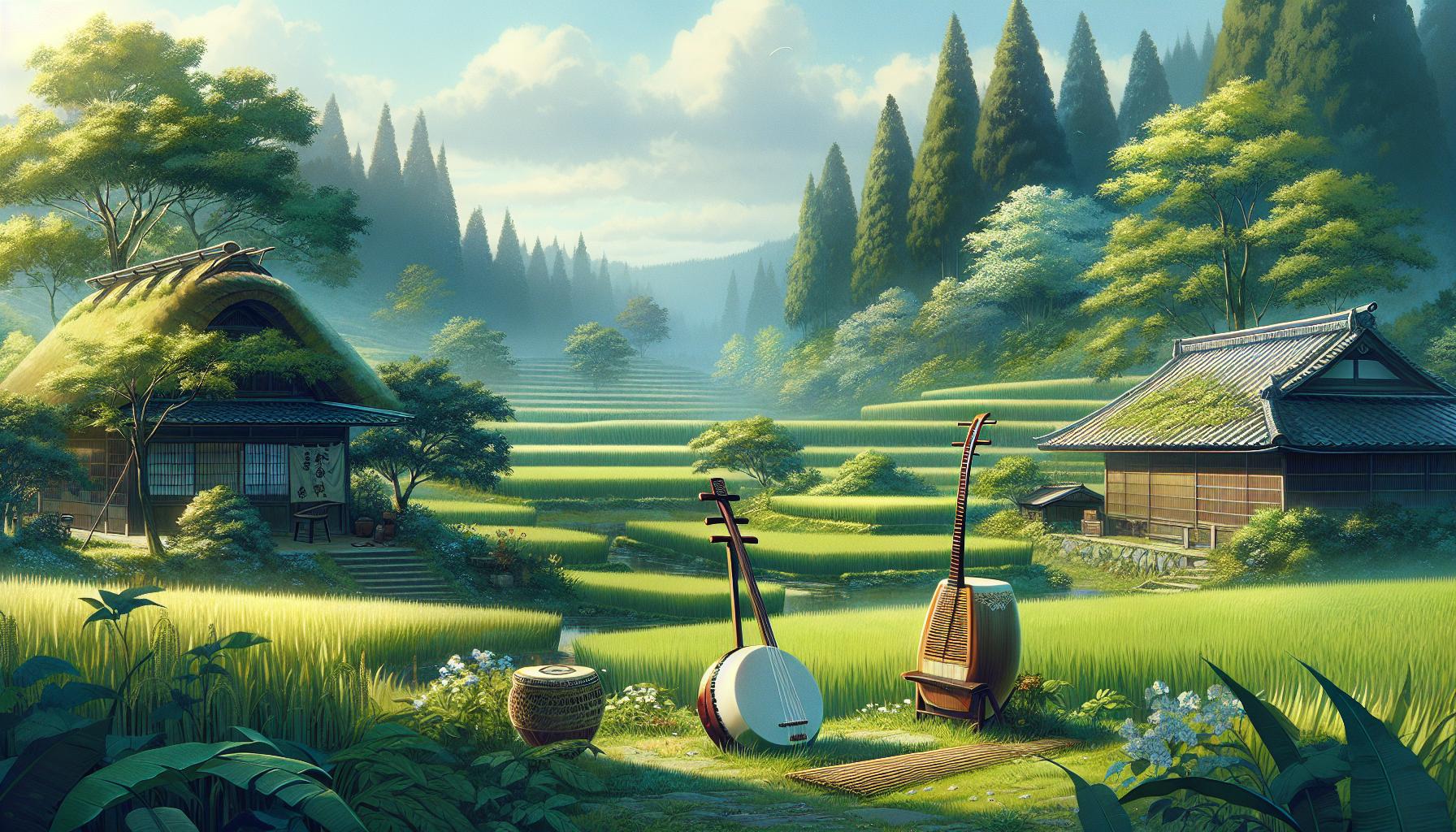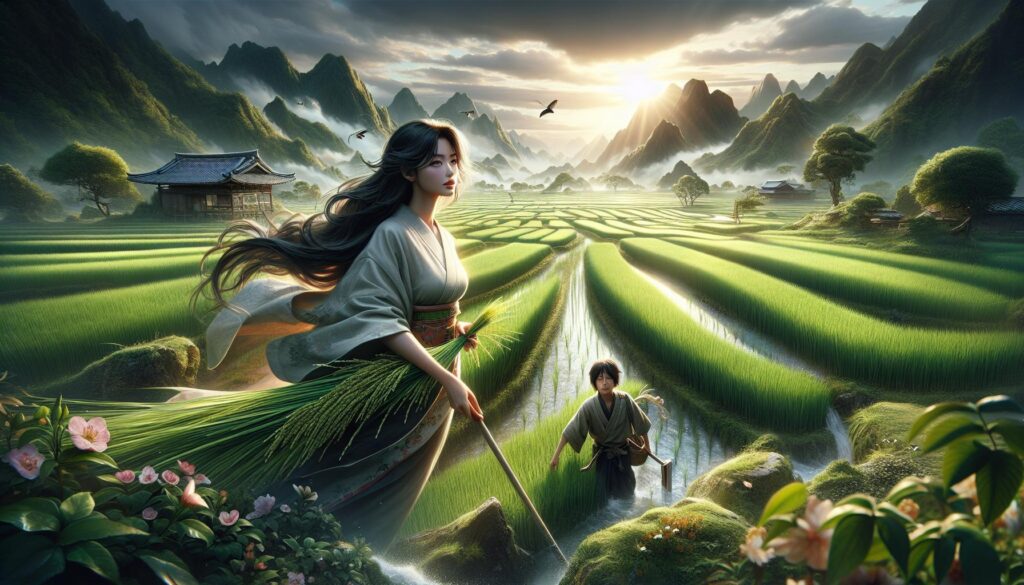Anime has a unique way of weaving intricate tales that captivate audiences worldwide, and “Sakuna: Of Rice and Ruin” is no exception. This beautiful blend of action, adventure, and agriculture takes us on a journey through a lush, mystical world where the goddess Sakuna battles demons while mastering the art of rice farming. I can’t help but marvel at how this series combines stunning visuals with a deep-rooted appreciation for Japanese culture and tradition.
As I dive into the enchanting universe of Sakuna, I find myself drawn to its rich storytelling and character development. The show not only entertains but also educates viewers about the significance of rice cultivation in Japan. Join me as we explore the themes, artistry, and the impact of “Sakuna: Of Rice and Ruin” on the anime landscape, revealing why it’s a must-watch for fans and newcomers alike.
Key Takeaways
- Unique Blend of Themes: “Sakuna: Of Rice and Ruin” masterfully combines action, adventure, and agricultural elements, providing a multidimensional narrative that highlights Japanese culture.
- Cultural Significance of Rice: The anime emphasizes the importance of rice farming in Japanese traditions, enriching viewers’ understanding of agricultural practices and their cultural relevance.
- Strong Character Development: Protagonists like Sakuna and Kinta showcase growth and resilience, reflecting personal challenges alongside agricultural progress.
- Visually Stunning Animation: The series utilizes a blend of 2D and 3D techniques, with rich color palettes and traditional Japanese motifs enhancing its artistic appeal.
- Immersive Soundtrack and Voice Acting: Incorporating traditional instruments, the musical score adds emotional depth, while powerful voice performances elevate character portrayals and viewer connection.
- Widespread Acclaim: The anime has garnered positive reviews for its engaging storyline and artistic presentation, sparking discussions about Japanese culture and agriculture among audiences.
Anime: Sakuna – An Enchanting Blend of Action, Culture, and Adventure
“Sakuna: Of Rice and Ruin” presents a seamless blend of action, adventure, and agricultural elements, set against a rich and mystical backdrop. The anime uniquely captures the essence of Japanese culture, focusing on the vital practice of rice farming. The vibrant visuals draw viewers into an enchanting world, highlighting the game’s artistic design and character aesthetics.
Character development stands out in this series, with protagonists like Sakuna embodying traits that resonate with audiences. Each character’s journey intertwines with themes of growth, perseverance, and harmony with nature. The storytelling effectively balances entertainment and education, sparking interest in Japanese traditions related to agriculture.
Themes such as the significance of rice in Japanese life are explored thoroughly. The dedication required for harvesting rice parallels the characters’ struggles and triumphs throughout the narrative. This aspect not only enriches the viewer’s experience but also fosters a deeper understanding of cultural practices.
“Sakuna: Of Rice and Ruin” captivates viewers through its artistry and narrative depth. The engagement with traditional themes and the dynamic character arcs position it as a noteworthy addition to the anime landscape, appealing to both long-time fans and those new to the genre.
Storyline and Plot Development

The storyline of “Sakuna: Of Rice and Ruin” skillfully intertwines action, adventure, and agricultural elements within a mystical setting. This approach enriches the narrative while highlighting Japanese culture and the significance of rice farming.
Main Characters
- Sakuna: The protagonist embodies growth and resilience as she transitions from a reckless deity to a diligent farming figure. Her journey reflects her internal struggles and gradual maturity.
- Kinta: A young human who becomes an essential companion, Kinta showcases determination and curiosity. His character serves as a bridge between the human world and the divine, offering valuable perspectives on both.
- Kushega: A supporting character who adds depth with her combat skills and strategic mindset, Kushiga’s interactions with Sakuna highlight themes of friendship and loyalty.
- Growth and Perseverance: Characters confront challenges that require hard work, symbolizing personal development alongside agricultural progress.
- Harmony with Nature: The series emphasizes the symbiotic relationship between the characters and their environment, illustrating the importance of respecting nature.
- Cultural Appreciation: The storyline reflects authentic Japanese practices, particularly rice cultivation, enriching viewer understanding of cultural significance.
- Community and Collaboration: The narrative showcases the value of teamwork, as characters work together to overcome obstacles and achieve common goals.
These elements combine to create a captivating narrative that resonates with viewers while shedding light on deeper cultural themes.
Animation and Art Style

The animation and art style of “Sakuna: Of Rice and Ruin” serve as a testament to its dedication to visual storytelling and cultural authenticity.
Visual Aesthetics
Visually appealing, the anime combines 2D and 3D techniques to create stunning landscapes and dynamic scenes. Rich color palettes enhance the depiction of the rural environment, capturing the beauty of nature and the changing seasons. The use of traditional Japanese art motifs, like ink wash and watercolor textures, further immerses viewers in a world that respects and reflects Japanese culture. Each frame captures meticulous details, whether in the lush rice fields or the mystical elements that surround Sakuna, creating a feast for the eyes.
Character Design
Character design showcases unique and memorable aesthetics, reflecting each character’s personality and background. Sakuna’s design highlights her dual nature as both a deity and a farmer, blending traditional attire with functional elements suited for agricultural tasks. Kinta’s appearance represents his youthful innocence, embodying the spirit of human resilience. Supporting characters like Kushega sport intricate designs that reflect their roles and skills within the story, enhancing the overall character dynamics. The artists’ attention to detail ensures that each character stands out while contributing to the narrative’s themes.
Soundtrack and Voice Acting

The soundtrack and voice acting in “Sakuna: Of Rice and Ruin” play crucial roles in enhancing the overall experience of the anime. Both elements contribute significantly to the emotional depth and cultural authenticity of the narrative.
Musical Composition
The musical composition seamlessly blends traditional Japanese instruments with modern orchestration, creating an immersive auditory experience. The score accentuates pivotal moments in the storyline, heightening the emotional impact during scenes of conflict and tranquility. Notably, the use of instruments like the shamisen and shakuhachi evokes a sense of nostalgia and connection to Japanese heritage. Tracks vary in tempo and mood, reflecting the changing seasons and dynamics of Sakuna’s journey. The music serves as both a narrative device and a cultural touchstone, enriching the viewer’s understanding of the series.
Voice Performances
Voice performances add depth to character portrayals, bringing each personality to life. The actors deliver nuanced emotional expressions that resonate with the audience. For example, the voice of Sakuna captures her transition from a carefree deity to a responsible figure, embodying themes of growth and determination. The chemistry among the cast is palpable, enhancing interactions between characters like Sakuna and Kinta. Supporting characters, such as Kushega, display distinct vocal traits that highlight their unique backgrounds and roles within the story. The voice acting elevates the anime, creating a strong connection between viewers and the characters, ultimately enriching the narrative experience.
Reception and Impact
“Sakuna: Of Rice and Ruin” received widespread acclaim for its unique blend of gameplay elements and artistic presentation. Critics praised the game for its engaging storyline and character development. Users noted that the transition of Sakuna from a reckless deity to a responsible character resonated strongly, providing a compelling narrative arc.
The animation style attracted attention, with reviewers highlighting the combination of 2D and 3D techniques. The stunning visuals captivated audiences, emphasizing the detailed landscapes and vibrant colors that reflect seasonal changes. This artistry contributed to a rich viewing experience appreciated by both critics and fans.
The soundtrack and voice acting further enhanced the anime’s impact. Many reviews draw attention to the seamless integration of traditional Japanese instruments, adding cultural authenticity. These musical elements not only evoke emotion but also elevate pivotal storytelling moments. Voice performances, particularly those behind Sakuna and her companion Kinta, received admiration for their emotional depth.
The combination of these elements fostered a community among fans, leading to discussions about agriculture and Japanese culture. This cultural significance sparked interest in rice farming practices and the traditions surrounding it, extending the anime’s impact beyond entertainment.
“Sakuna: Of Rice and Ruin” also gained recognition in various industry awards, underscoring its influence and success. The anime’s thoughtful exploration of themes like growth, perseverance, and community drew appreciation from a diverse audience. Its ability to resonate on multiple levels has solidified its place as a significant work within the anime sector.
Remarkable Anime
“Sakuna: Of Rice and Ruin” stands out as a remarkable anime that beautifully intertwines action and agriculture. Its stunning visuals and rich storytelling not only entertain but also educate about the significance of rice farming in Japanese culture.
The character development, especially of Sakuna, resonates deeply with themes of growth and perseverance. The blend of traditional and modern elements in the animation and soundtrack creates an immersive experience that captivates viewers.
This anime has left a lasting impact on its audience and sparked meaningful discussions about cultural practices. I can’t recommend it enough for anyone looking to explore a unique narrative that celebrates both nature and community.


